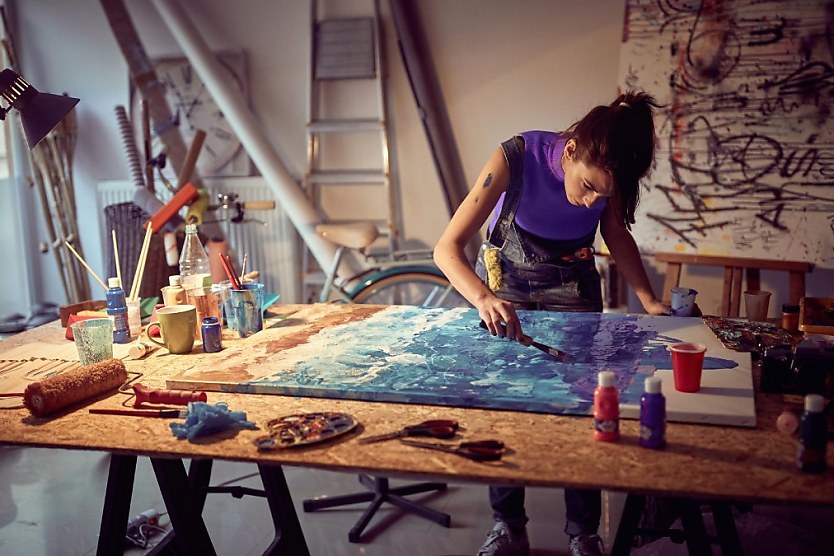Aussie artists are struggling to make a living
SHARE THIS ARTICLE

The working lives of Australian artists are not an economically friendly activity; in fact, a number of them are struggling to stay afloat in the cost-of-living crisis.
Creative Australia has released a report on the working lives of Australian artists, displaying how much they contribute to Aussie culture, yet how a vast majority of them are struggling to earn enough money to live off.
The study Artists as Workers presents new insights and long-term trends in the lives of current artists and their working conditions. It highlights the constant need for resilience that artists must have as they face the ongoing challenges of rising costs, increasingly precarious employment, and the new threats being leveed against them in this digitised environment.
Creative Australia chief executive Adrian Collete said: “Despite the fact Australians value the contributions of artists, the challenges artists face in earning a living have never been greater. This extensive economic study provides valuable insights into the current and future challenges for artists.”
“[The report] underscores the urgent need for support systems and fair remuneration that truly reflects the substantial value artists contribute to our society and economy.”
There’s a new era in the arts space, and the landscape has evolved a lot over the past decade. Some of the insights from the report highlighted these changes:
- Women now outnumber men roughly two to one across almost all artistic occupations.
- The number of artists with disability has doubled since 2016.
- The number of artists who are multilingual and based in regional areas is also increasing.
- However, barriers and disparities remain. For example, on average, women artists continue to earn 19 per cent less than their male counterparts, a gap greater than the general workforce’s pay gap of 12 per cent in 2023.
As the landscape has adapted, new challenges and barriers have arisen. As alluded to in the report, the gender pay gap is also an issue in the arts space, with women earning a significant amount less than their male counterparts.
Other roadblocks and barriers that have only popped up recently are based on technological change. In total, 93 per cent of artists use technology in the process of creating art, and 65 per cent believe future technological changes will open new creative and income-earning opportunities for artists.
However, the growing threat of artificial intelligence (AI) has posed numerous challenges for artists in ensuring that copyright laws protect the control over their own work. An example of this happened at the start of the year as someone used AI to produce and manufacture fake Indigenous artwork without any permission and then sold it through online forums. Moral, ethical, and copyright issues were discussed throughout the ordeal, yet it wasn’t an isolated incident.
In terms of the economic situation for artists, while the average income from creative work has remained similar, the average costs to produce their work have increased. Only 9 per cent of artists work full-time solely on their creative practice, which is strikingly lower than the total in 2016 (23 per cent). The other 91 per cent find work in both art-related and non-arts-related jobs.
The average total income for an Australian artist is around $54,500, which is 26 per cent lower than the overall workforce average. In a cost-of-living crisis, an income much lower than the workforce average is going to create a number of difficulties.
Most artists (78 per cent) are self-employed or operate on a freelance basis through their creative work. This, of course, can have its own detriments as it could result in there not being a constant revenue stream, as freelance income is based on the clients that the artist has.
As consistent revenue stalls, artists are under the pump on the financial front. Considering the gendered issues, digital technology threats, and the overall financial situation, the industry is crying out for those support systems and fair remuneration that Collete spoke about. Overall, the industry is well respected across Australia and captures the nuance of the nation as a whole; therefore, ensuring the artist’s situation is improved should be a priority.
Kace O'Neill
Kace O'Neill is a Graduate Journalist for HR Leader. Kace studied Media Communications and Maori studies at the University of Otago, he has a passion for sports and storytelling.

